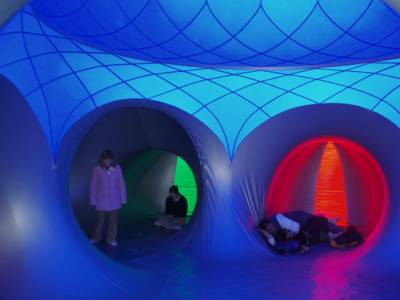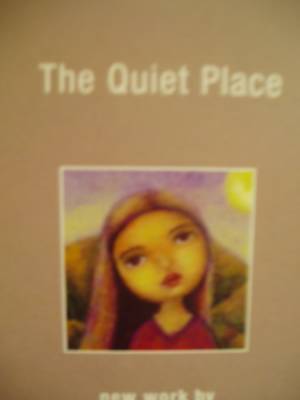::
However, this presents the possibility of the Trinity as an abstract meta-narrative, a model for human relationships. And I wonder how such a potentially abstract model is shaped by place. How do the contours of land, of land displacement, shape a Trinitarian theology.
The typical answer is that in Jesus the Trinity becomes "placed"? As Jesus walks, so the Triune God walks. This makes all place important, as a localised, Jewish place, is universalized. However, there is a nagging sense that once again the Trinity has become an abstract meta-narrative, a model for human relationships; as God in one place becomes God in all places.
::
I think it is important to consider the difference between ‘place’ and ‘space’. Brueggemann states it well:
Place is space which has historical meanings, in which important words have been spoken which have established identity, defined vocation, envisioned destiny… Place is indeed a protest against the unpromising pursuit of space. It is a declaration that our humanness cannot be found in escape, detachment, absence of commitment and undefined freedom. (The Land:185)
A sense of place gives a sense belonging, space doesn’t. I think it means that we may sit in a space at a café table. This space has potential to have a special, distinct character. More plainly, this café table will form part of the story and take meaning as a place for you. In turn this ‘place’ will have some sense of sacred to us as a result, in memory, as something significant happened at that table.
As someone 'displaced' beyond the land contours I once knew and all the sense of belonging that was there these are very relevant and real issues that are more than theological/philosophical abstarctions
As to Trinity and place therefore, I think the patristic Fathers had different concepts of space and time in more relational terms. Celtic Christianity had a real sense of whole. Further, I came upon Jan von Ruysbroeck, Flemish 14th Century contemplative. For him, the Trinity is never at rest, there is a perichoretic relationship that unfolds, that is there is a dancine-like movement and flow in relatuionships) and ‘we’ in relationship enter into that ‘dance relationship’. Trinity is a dynamic interpersonal relationship. In this way I think Trinity is to be seen more than some abstract meta-narrative, which I think is how we have somehow perceived the static the Trinity, sacred, secular in some dualistic, binary fashion. Sheldrake (Spaces for the Sacred. p129) writes ‘Yet God is to be thought of as both in no place alone and yet in every place at once.’ Does a relational movement begin to enable us to hold this sense of God and relationship/communion?
What do others reckon with Steve's questions? It's a subject that is raised when you move beyond Flatland. Is the Trinity Placeless and what of our understandings? What does this do for a spirituality of Place?
I came upon this article in which Brian McLaren in Christianity Today(November 2004) says:
Church is not a place one attends but a community to which one belongs, he said. The community shares in mission and spiritual practice. It is rooted in a common story whose emphasis is on the continuing work here and now, always drawing from our past."Rather than measuring the church by its attendance, we will measure it by its deployment," McLaren said. "One of the greatest enemies of evangelism is the church as fortress or social club; it sucks Christians out of their neighborhoods, clubs, workplaces, schools, and other social networks and isolates them in a religious ghetto. There it must entertain them (through various means, many of them masquerading as education) and hold them (through various means, many of them epitomized by the words guilt and fear). Thus Christians are warehoused as merchandise for heaven, kept safe in a protected space to prevent spillage, leakage, damage, or loss until their delivery."
Rather, he said, the church should be an open community, welcoming strangers as Jesus welcomed sinners.
Relatively few churches will change from the fortress model to something else, he said, but even as new church forms sprout and grow, their leaders must honor other forms. "These new hives of Christian vitality could be abuzz in all sectors, forms, styles, or 'models' of the church," he said. "They would in this sense be catholic—honoring and receiving rather than protesting and rejecting one another, with no sense at all that there's one model or one 'right way' of living as the church."




